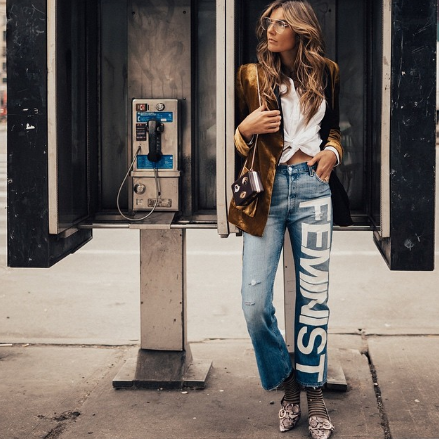
Last year, a friend of mine—a well-established journalist who writes for major publications and websites—made an appointment with a literary agent to present an idea for a book she wanted to write.
The agent was polite, but his message was clear: Her huge body of work didn’t amount to much in the publishing world, which—like many other industries, including jewelry and fashion—has taken to measuring the influence, popularity, and odds of success of an individual by the number of Instagram followers he or she has.
Public adoration on social media, primarily in the form of Instagram followers, is suddenly the most reliable road to self-branded glory. Rack up hundreds of thousands of followers, and the doors to creative, well-funded opportunities swing open with a gentle swish.
But the brands who’ve been rewarding these influencers so handsomely need to pay closer attention to the quality of their followings. There are numerous ways to buy follows—businesses have been set up to create and sell fake, or bot, accounts for that very reason.
According to a recent study by digital agency Fohr Card, the number of authentic, real-world followers of top influencers on Instagram can be off by as much as 20 percent.
The firm recently analyzed the followers of 20 million Instagram accounts, and WWD reports that the agency’s findings showed on average, “approximately 7.8 percent of the total followings across these accounts were bots, with some influencer followings containing as much as 20 percent fake followers.”
The disparity is, and should be, a concern for brands looking to work with Instagram stars.
Influencers with high follow counts, such as Justin Beiber and Kendall Jenner, command hundreds of thousands of dollars for a single branded post. Brands pay to reach an agreed-upon amount of followers, and if 20 percent of those followers are bots (basically nonexistent), the cost of any campaign should decrease.
WWD also reports that data analysis firm Mediakix “projected that advertiser spend with influencers on Instagram will surpass $1 billion per year this year. This means that almost $80 million could be spent on advertising to fake accounts in 2017—and this could have grave effects on ROI.”
James Nord, cofounder and chief executive officer of Fohr Card, said in the WWD article, “If you have an abnormally high number of bots following you, there is a decent chance that you bought those followers. I could see a situation where you can randomly have a bunch of bots follow you, but if it walks like a duck, talks like a duck and looks like a duck, it’s a duck.”
Fortunately, businesses built to bust influencers who buy followers are cropping up to combat shady companies like Buzzoid and Hypez that sell bot-based follows.
Fohr Card, for one, is offering a new service for its clients that gauges an influencer’s “follower health” on a scale of -8 to 8 (-8 is a fake follower or a bot and 8 is a very engaged, real-life user).
But often you don’t need to hire a company to find a bot. Just look for an Instagram user “who has no bio, a weird username and they are following 10,000 people and have one photo,” says Nord. “That’s a bot.”
Top: A sponsored post from Instagram influencer The Blonde Salad (Image courtesy of @theblondesalad)
- Subscribe to the JCK News Daily
- Subscribe to the JCK Special Report
- Follow JCK on Instagram: @jckmagazine
- Follow JCK on X: @jckmagazine
- Follow JCK on Facebook: @jckmagazine